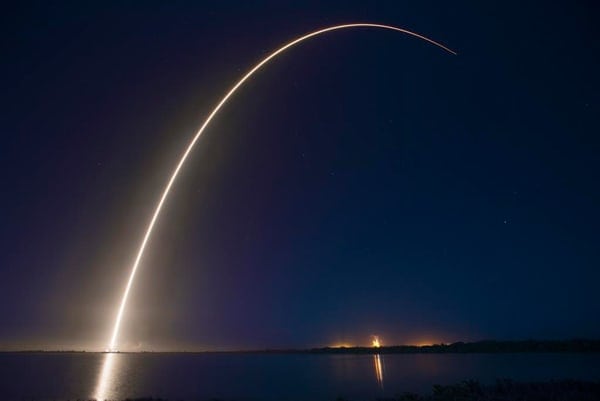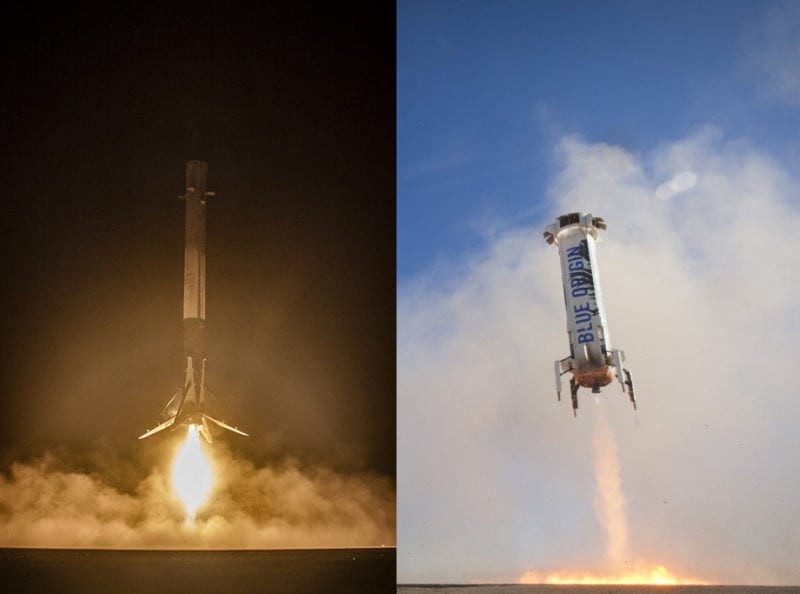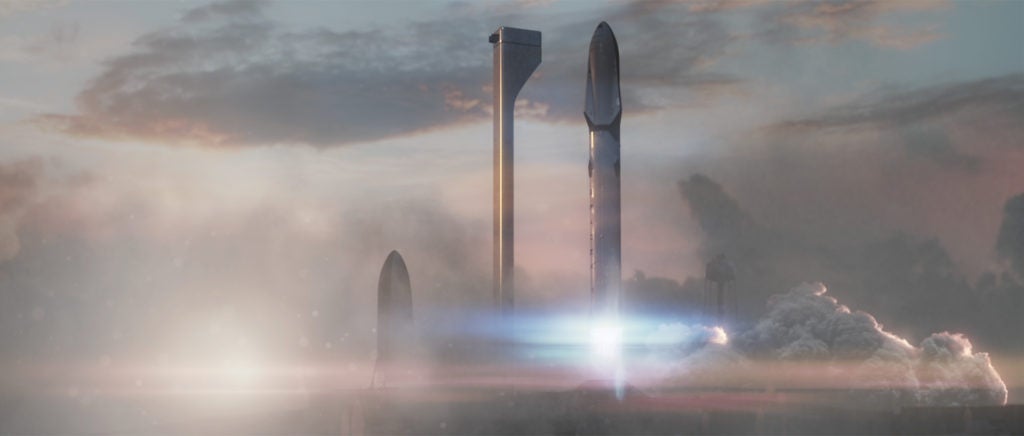Latest News

Eutelsat 117 West B launch. Photo: SpaceX
The launch market is entering an unprecedented era of diversity. This was one of the main conclusions of the highly anticipated launchers panel Wednesday afternoon at SATELLITE 2017. Executives from all the major launch providers all seemed to agree that smaller satellites will become more popular as demand for connectivity ramps up.
SmallSat Market Explosion
Immediately, Lockheed Martin Commercial Launch Services President Steven Skladanek expressed his disinterest on the GEO side. “What we see is the traditional large GEO birds are not a real growth market right now. That particular customer set is struggling with their economic models … The LEO market, however, is growing tremendously,” he said. Skladanek stated that he’s very encouraged by the amount of money being invested in LEO constellations, and expects smaller satellites to become more dominant as time progresses.
Gwynne Shotwell, SpaceX COO, also noted this explosion in the smallsat market and warned that newer, smaller launch service providers could become fierce competitors, much like SpaceX did a decade ago. Stephane Israel, CEO of Arianespace, was not so certain. “I do not believe they will all materialize and survive,” he said, pointing out that Arianespace’s Vega C will have space to accommodate smaller and lighter satellites, likely as secondary payloads.
Kirk Pysher, president of International Launch Services (ILS), still believes GEO satellites will play a role. “[By] 2022, we believe that the launch market customer needs are going to be extremely diverse, from LEO constellations to MEO and of course GEO,” he said. “We spent the last year and a half working with customers and understanding what their needs are. As a result, we introduced the Proton variants in the fall of last year, which will be ready first quarter 2018.” Pysher believes the company will be very well suited to address the spread of new, more experimental satellites coming to the market, particularly the heavier High-Throughput Satellites (HTS). Still, he is looking to address the smallsat market with Angara 1, which he said can deliver up to 3.5 tons to LEO.
A Push for Low-Cost Launch

A SpaceX Falcon 9 first stage landing and a Blue Origin suborbital New Shepard launch vehicle landing. Photo: SpaceX/Blue Origin
The panelists highlighted there is downward pressure on launch prices due to companies like SpaceX and Blue Origin, which are pushing for what Blue Origin President Rob Meyerson calls “operational reusability.” Skladanek also said that United Launch Alliance (ULA) is looking at ways to recover the first stage engine for the Vulcan, as well as making improvements along the production line.
“It makes sense to reutilize the most expensive parts of the rocket … The rest of it is a big dump tank,” he said. “We’re working on newer manufacturing technologies like 3D printing. We’re shortening the span it requires to assemble, test and prepare he rocket which allows for more launch opportunities.”
Arianespace does not plan on being left behind in pricing, as Israel has the ambitious goal of reducing the cost for Ariane 6 compared to Ariane 5 by “40 percent.”
Reliability and Talent
As for the long-term future, the panelists agreed that reliability will remain paramount. Ko Ogasawara, VP and director of integrated defense and space systems at Mitsubishi Heavy Industries (MHI), hopes to reach 50 consecutive launch successes by 2022, while Israel is determined to finish his company’s new rockets on schedule. “We must remain reliable; I think this is the key for us. We have to deliver Ariane 6 and Vega C on time,” he said.
Shotwell is all too familiar with the financial consequences of delays due to technical difficulties, but expressed confidence that SpaceX will catch up on its launch manifest before the end of the year. “We are investing hundreds of millions in production capacity,” she said, and expects the company to ultimately reach a biweekly launch rate once its second launch pad is in working order.
For Skladanek, it seems his biggest concern for the far future is ensuring interest and innovation in space continues on into younger engineers and entrepreneurs. “A lot of the heritage workforce who have been part of the rocket industry for years [are] now ready for retirement, self included. The thing that worries me is we’re not doing enough to ensure we’re transferring talent to this new generation,” he said.
Going Beyond Earth Orbit
Both Shotwell and Meyerson seemed less interested in satellites specifically, and instead outlined their plans to focus on developing the capabilities of human activity in space. “We believe it’s time for humanity go back to the Moon, and this time to stay,” Meyerson said. He noted that any human settlement on the moon is going to need a cargo delivery service and hopes to address that with Blue Origin’s recently announced Blue Moon program.
Shotwell also has her eyes on our closest celestial neighbor, referencing SpaceX’s literal “moon shot” mission to take two passengers around the far side of the Moon and back. Furthermore, Shotwell reiterated the company’s goal of reaching Mars, and stated it is currently developing a vehicle large enough to carry 100 people to the Red Planet as a part of its Interplantery Transport System (ITS).

Rendering of an ITS launch vehicle departing Launch pad 39A, with an ITS tanker standing by (at left). Photo: SpaceX.
Get the latest Via Satellite news!
Subscribe Now